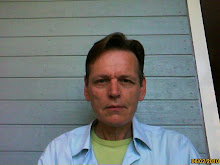LOS ALAMOS, N.M., June 1, 2006 -- A team of scientists working at the National High Magnetic Field Laboratory's Pulsed Field Facility at Los Alamos has uncovered an intriguing phenomenon while studying magnetic waves in barium copper silicate, a 2,500-year-old pigment known as Han purple. The researchers discovered that when they exposed newly grown crystals of the pigment to very high magnetic fields at very low temperatures, it entered a rarely observed state of matter. At the threshold of that matter state--called the quantum critical point-the waves actually lose a dimension. That is, the magnetic waves go from a three-dimensional to a two-dimensional pattern. The discovery is yet another step toward understanding the quantum mechanics of the universe.
Writing about the work in today's issue of the scientific journal Nature, the researchers describe how they discovered that at high magnetic fields (above 23 Tesla) and at temperatures between 1 and 3 degrees Kelvin (or roughly minus 460 degrees Fahrenheit), the magnetic waves in Han purple crystals "exist" in a unique state of matter called a Bose Einstein condensate (BEC). In the BEC state, magnetic waves propagate simultaneously in all of three directions (up-down, forward-backward and left-right). At the quantum critical point, however, the waves stop propagating in the up-down dimension, causing the magnetic ripples to exist in only two dimensions, much the same way as ripples are confined to the surface of a pond.
"The reduced dimensionality really came as a surprise," said Neil Harrison, an experimental physicist at the Los Alamos Pulsed Field Facility, "just when we thought we had reached an understanding of the quantum nature of its magnetic BEC."
Harrison and other team members, including Cristian Batista, Marcelo Jaime and Peter Sharma from Los Alamos and Suchitra Sebastian and Ian Fisher from Stanford University, believe that the lost dimension phenomenon is caused by the strange nature of atomic behavior in quantum states. In the higher temperatures of the BEC state, the individual waves, which are associated with magnetism from pairs of copper atoms in the Han Purple pigment, lose their identities and condense into one giant wave of undulating magnetism. As the temperature is lowered, this magnetic wave becomes more sensitive to the vertical arrangement of individual copper layers in the pigment -which are shifted relative to each other- in a phenomenon called "geometrical frustration." This "geometrical frustration" makes it difficult for the magnetic waves to propagate in the third up-down dimension, which leads to its two-dimensionality.
"This is truly paramount work," said Alex Lacerda, associate director for user operations for all three sites of the magnet lab and director of the Pulsed Field Facility. "It takes world-class magnets, instruments and people, all of which the magnet lab has, to produce these kinds of landmark results."
The research team also includes Luis Balicas from the NHMFL facility at Florida State University and Naoki Kawashima from University of Tokyo. The National Science Foundation through the National High Magnetic Field Laboratory and Stanford University, the state of Florida and the U.S. Department of Energy supported the research.
source: Los Alamos National Laboratory
Writing about the work in today's issue of the scientific journal Nature, the researchers describe how they discovered that at high magnetic fields (above 23 Tesla) and at temperatures between 1 and 3 degrees Kelvin (or roughly minus 460 degrees Fahrenheit), the magnetic waves in Han purple crystals "exist" in a unique state of matter called a Bose Einstein condensate (BEC). In the BEC state, magnetic waves propagate simultaneously in all of three directions (up-down, forward-backward and left-right). At the quantum critical point, however, the waves stop propagating in the up-down dimension, causing the magnetic ripples to exist in only two dimensions, much the same way as ripples are confined to the surface of a pond.
"The reduced dimensionality really came as a surprise," said Neil Harrison, an experimental physicist at the Los Alamos Pulsed Field Facility, "just when we thought we had reached an understanding of the quantum nature of its magnetic BEC."
Harrison and other team members, including Cristian Batista, Marcelo Jaime and Peter Sharma from Los Alamos and Suchitra Sebastian and Ian Fisher from Stanford University, believe that the lost dimension phenomenon is caused by the strange nature of atomic behavior in quantum states. In the higher temperatures of the BEC state, the individual waves, which are associated with magnetism from pairs of copper atoms in the Han Purple pigment, lose their identities and condense into one giant wave of undulating magnetism. As the temperature is lowered, this magnetic wave becomes more sensitive to the vertical arrangement of individual copper layers in the pigment -which are shifted relative to each other- in a phenomenon called "geometrical frustration." This "geometrical frustration" makes it difficult for the magnetic waves to propagate in the third up-down dimension, which leads to its two-dimensionality.
"This is truly paramount work," said Alex Lacerda, associate director for user operations for all three sites of the magnet lab and director of the Pulsed Field Facility. "It takes world-class magnets, instruments and people, all of which the magnet lab has, to produce these kinds of landmark results."
The research team also includes Luis Balicas from the NHMFL facility at Florida State University and Naoki Kawashima from University of Tokyo. The National Science Foundation through the National High Magnetic Field Laboratory and Stanford University, the state of Florida and the U.S. Department of Energy supported the research.
Los Alamos National Laboratory is a multidisciplinary research institution engaged in strategic science on behalf of national security. The Laboratory is operated by a team composed of Bechtel National, the University of California, BWX Technologies, and Washington Group International for the Department of Energy's National Nuclear Security Administration.
Los Alamos enhances national security by ensuring the safety and reliability of the U.S. nuclear stockpile, developing technologies to reduce threats from weapons of mass destruction, and solving problems related to energy, environment, infrastructure, health and global security concerns.
source: Los Alamos National Laboratory

No comments:
Post a Comment